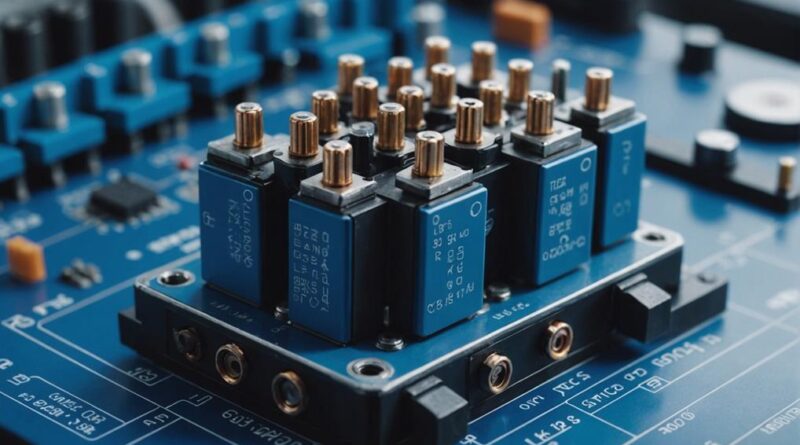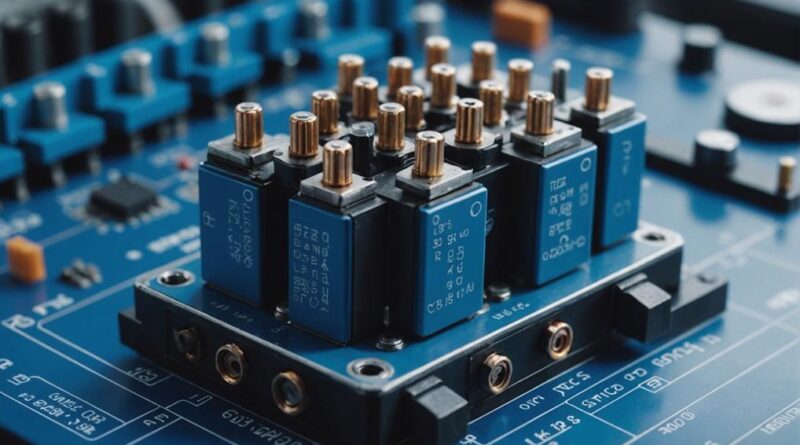
You have probably experienced situations where controlling a circuit without continuous power supply is essential. Enter this Impulse relay a device that reports its magnetic bistability state even after interruption of ignition power. This ability improves energy efficiency and expands its application possibilities in different areas. Choosing the right type of interlock relay – whether single or dual coil or voltage sensitive – largely depends on your specific needs and the nuances of your configuration. As you explore the integral components and principles of these relays, consider how their unique properties could revolutionize your approach to power management and circuit design.
The central theses
- Latching relays maintain their position without continuous power supply, improving energy efficiency.
- They have two stable states, “set” and “reset”, which are controlled by short-term electrical pulses.
- Available in single-coil and dual-coil versions, each offering different switching control benefits.
- Reduces wear due to less frequent operations and thus increases the useful life of the relay.
- Used in applications that require reduced power consumption and efficient state control.
Interlock Relay Information
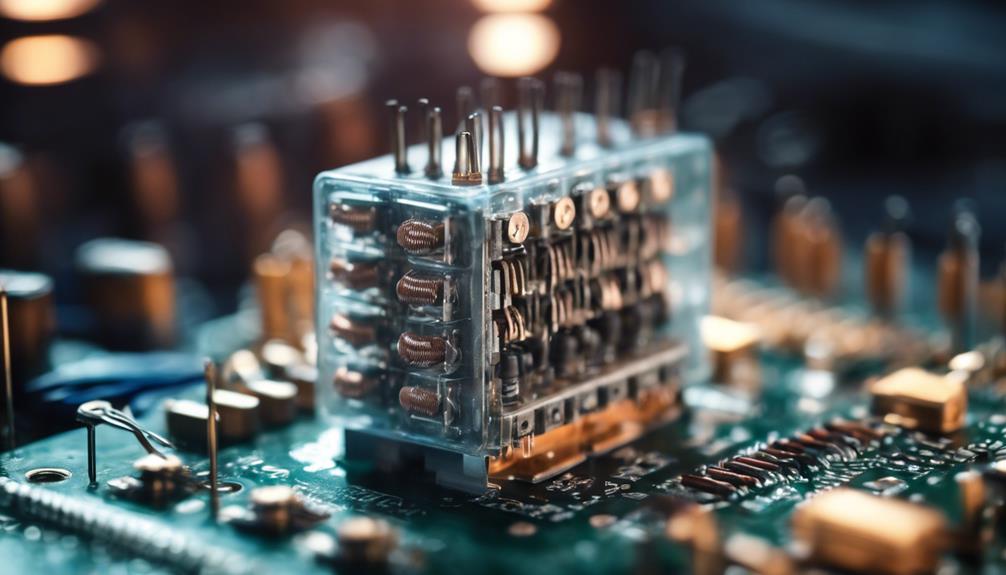
The Impulse Relay maintains its position after actuating power is removed, therefore no continuous power is required to keep the circuit closed or open. This function enables magnetic bistability, a fundamental aspect that makes latching relays particularly efficient for energy savings in systems where energy availability is limited or expensive.
Magnetic bistability means that the relay has two stable states generally 'set' and 'reset'. If you have a short-term power surge the relay switches to the “set” state and remains there even when the pulse ends. Another pulse, often of opposite polarity, must return to the “reset” state. This switching mechanism is controlled by the relay. Control logic this determines how input pulses affect the state of the relay.
Understanding control logic is important because it determines how the relay fits into larger circuits and responds under different conditions. For example, whether you know whether your relay has a positive drive for setting and a negative for reset or vice versa affects how you design the control circuitry around the relay for the desired electrical behavior in your application.
Basic operating principles
To understand how an Impulse Relay functions, you must first understand the basic principles of operation. At its core, a latching relay is designed to maintain its state after actuation, whether open or closed . This unique feature makes it possible to use less electricity making it ideal for energy efficient applications.
The basis of how this relay works is in the Magnetic force generated by the activation of the coil. If you have an electric current to the coil, it creates a magnetic field. This field then moves the ferromagnetic anchor which physically switches the relay from one position to another. And that's the highlight: once the desired position is reached, you can turn off the power and the relay will remain in that final position without any additional power.
This behavior is due to a mechanical or magnetic lock that locks the anchor. Through this locking mechanism, the relay avoids the constant need for current to maintain its state, thus reducing energy consumption . This feature is extremely useful in scenarios where power supply is irregular or energy conservation is critical. Therefore, if you are working with current-sensitive configurations, a latching relay may be the ideal component for you.
Types of Interlock Relays
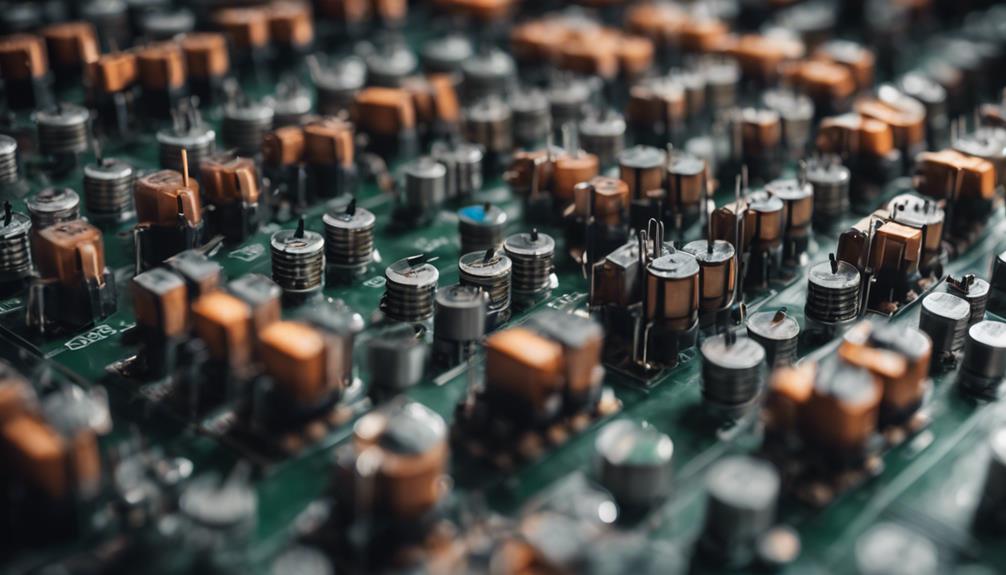
Understanding the basic operating principles paves the way to explore the different types of latching relays. These relays differ mainly in the way they operate magnetic polarity and coil voltage to maintain their condition.
Firstly, there is the Single Coil Latching Relay . Here, a current pulse of one polarity activates the relay and a pulse of opposite polarity resets it. This type relies heavily on magnetic polarity to switch between states using just one coil, making it efficient and uncomplicated .
Next you have this Dual Coil Latching Relay . Unlike its single-coil counterpart, it uses two coils, one for setup and one for reset. Each coil requires only a standard polarity current pulse to operate. This separation can reduce wear on each coil and often allows for more precise control over the shifting process.
Finally, let's take a look at these voltage dependent impulse relay . They are designed to respond to different coil voltage levels, allowing them to adapt to different applications. They are particularly useful when the control signal varies in voltage rather than polarity.
Each type offers unique advantages in Energy Efficiency Control precision or adaptability. Make your choice based on the needs of your specific configuration.
Main components and design
As you delve deeper into the key components and design of latching relays, you will see how each part plays a crucial role in their functionality and efficiency. The heart of these devices is the coil and contact assembly, essential for operation.
The coil in a latching relay is specifically designed for efficient power management. Its design minimizes power consumption while ensuring that the relay can switch between states. Coil design is critical to achieving the delicate balance between power consumption and reliable performance.
Relay materials also play an important role. These materials are selected for their electrical conductivity, magnetic properties and durability. High-quality materials ensure that the relay operates reliably in a variety of temperatures and environmental conditions.
Here's a quick breakdown of these components:
| component | Functionality |
|---|---|
| Coil design | Optimizes power consumption and improves switching efficiency |
| Contacts | Facilitates the flow of electricity and ensures accuracy |
| materials | Provides durability and reliable performance |
Understanding these elements will help you understand the complex engineering behind latching relays and their critical role in numerous applications.
Benefits of energy efficiency
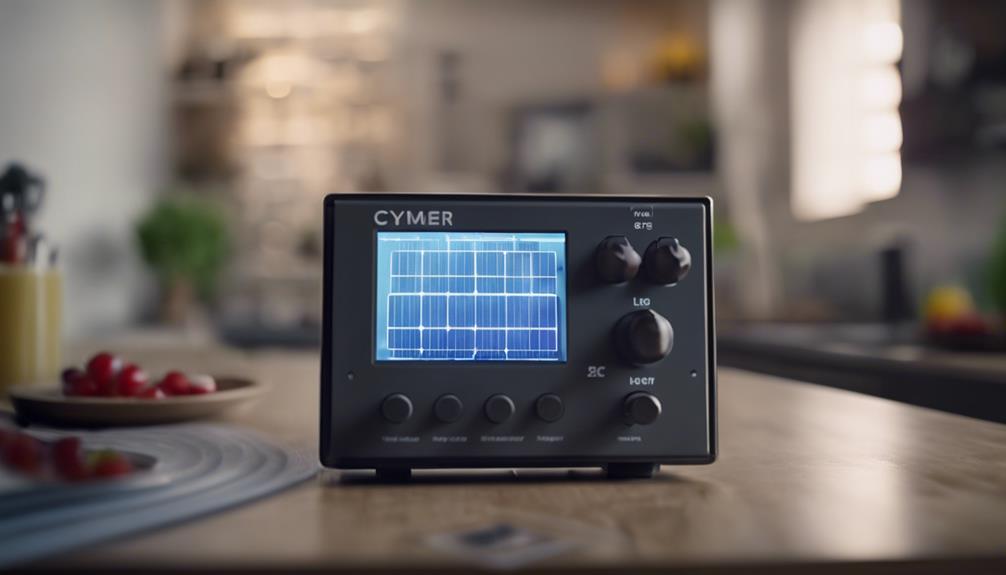
Impulse relays reduce energy consumption by maintaining continuous performance . You will find that this feature not only saves energy, but also your electricity bill . By activating a blocking relay you ensure that the device is only activated during non-continuous status change . This can result in significant savings, especially in systems where relays are frequently activated.
If you have a Cost analysis the advantages become even clearer. Although the initial cost of a latching relay is greater than that of a standard relay, the lower power consumption quickly offsets this. Over time, the electricity cost savings will contribute to lower total ownership costs. This is important in large-scale operations where multiple relays are in use.
Furthermore, there are regulatory implications of using energy efficient devices like Impulse Relay cannot be ignored. Many regions have strict guidelines on energy consumption for commercial and industrial operations. By integrating interlocking relays into your systems, you not only meet these regulations, but often exceed them. This compliance can avoid potential fines and strengthen your company's reputation as an environmentally conscious company. All of these factors make latching relays an attractive option for those looking to improve their energy efficiency.
Common uses
Test relays are often used in applications where it is essential to maintain a specific state without constant power, such as home security systems or industrial automation. These devices ensure that your devices run smoothly and safely and adhere to important security aspects. For example, in the event of a power outage, a latching relay maintains its position, preventing unexpected restarts or shutdowns that could lead to safety risks.
Market demand for latching relays has increased as the industry seeks more reliable and energy-efficient solutions. These relays are essential in areas such as renewable energy systems, where they help to efficiently control the flow of electricity from sources such as solar panels or wind turbines.
Here's a quick look at some typical applications:
| scope of application | function | Meaning |
|---|---|---|
| Home security systems | Keep settings after loss | Safety during power outages |
| Industrial automation | Control machine states | Safety and operational efficiency |
| Renewable Energy Systems | Manage energy flows | Efficiency in energy distribution |
| telecommunications | Signal Routing | Reliability in communication |
As you explore the world of latching relays, following these applications will help you better understand their value and impact across various industries.
Installation and Wiring Guide
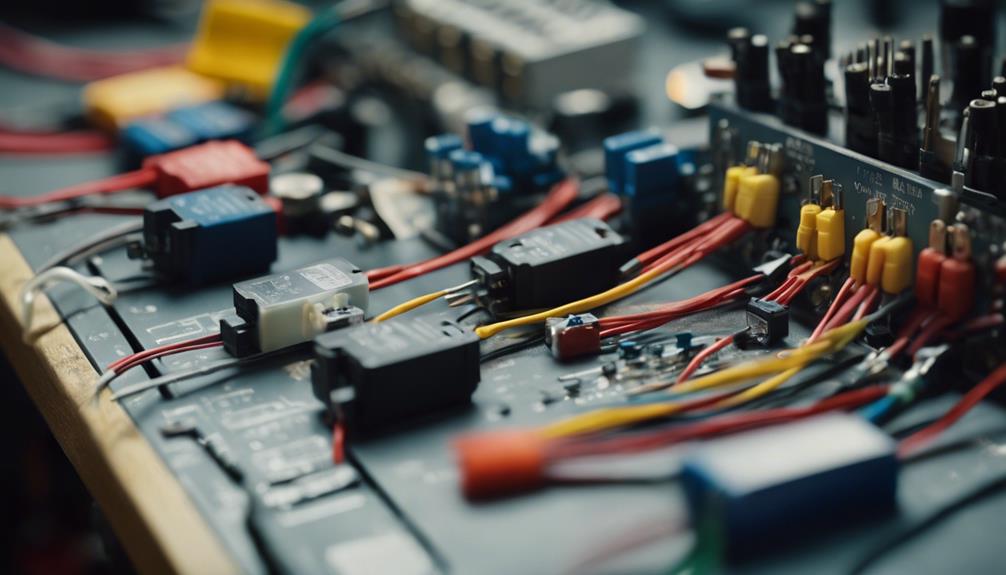
To properly install and wire an interlock relay, you must follow these basic steps. First, make sure you have all the necessary tools. you need wire stripper screwdriver and a multimeter . It is also advisable to label materials to keep your connections clear.
First turn on this power supply to avoid electrical hazards. This is your most important safety precaution. Use a multimeter to check if the power is off. Then check the relays circuit diagram . Each relay has specific connection points. Therefore, it is important that your cables comply with these points.
Carefully strip the wires to the recommended length, usually about 1/4 inch. Connect the wires to the corresponding terminals on the relay. You may need a soldering iron to secure the connections if it is a relay PCB. For Screw Terminals a simple screwdriver is sufficient. Tighten the connections, but be careful not to damage the screws.
Once all connections are secure, label each cable. This step will save you time during future maintenance or troubleshooting work. Finally, turn the power back on and test the relay by activating it. Check that it is working correctly. Your relay should work perfectly in your electronic or electrical system if everything is set up correctly.
Maintenance and troubleshooting
Regular maintenance and prompt troubleshooting can ensure optimal performance of your interlock relay. You should check and clean your relay regularly to prevent dust and dirt from affecting its functionality. Look for signs of wear or damage that may affect performance. It is also important to check electrical connections for looseness or corrosion, as these problems can lead to intermittent or complete relay failure.
For Performance Optimization You should regularly test the relay under load to ensure its reliability. This allows potential problems to be identified before they lead to failures. If you notice erratic behavior or response times from your relay, it's time for a more thorough inspection.
Regarding analysis error, be alert to common problems such as coil error or contact corrosion. Check coil resistance values with a multimeter to ensure they meet specifications. If you notice any discrepancies, you may need to replace the coil. Additionally, the contacts must be examined for any excessive wear or erosion, which can seriously affect the relay's performance. Replacing worn or damaged contacts can restore functionality and extend the life of your relay. Remember that resolving issues early can save time and avoid costly downtime .
Comparison of Interlock Relays and Standard Relays
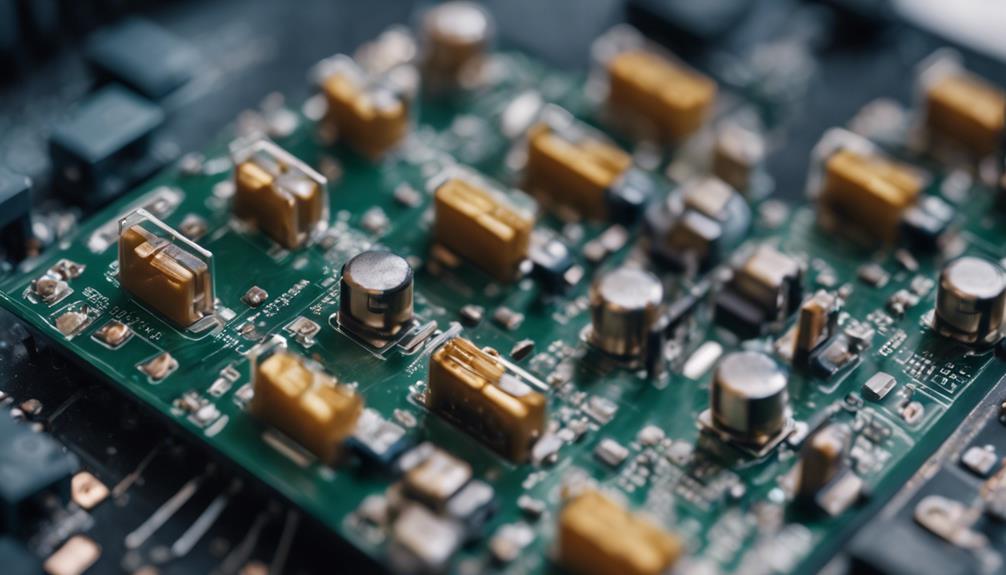
While maintaining your Impulse Relay Guarantees Superior Performance understand how it differs from standard Relay can further increase the efficiency of your system. Latching relays are primarily characterized by their ability to maintain a contact position without a continuous power supply, which is not the case with standard relays that require constant power to remain active.
This special functionality affects both relay life and switching speed . Because a latching relay does not require a constant supply of power, it typically lasts less wear and tear than its standard counterpart. This means you likely get a longer lifespan from your latching relay, reducing replacement frequency and cost.
Additionally, the design of the latching relays allows for faster switching speeds. They can change state instantly without the need for direct voltage, making them ideal for applications where fast switching is critical. In contrast, standard relays may experience short delays because they require power for each switching operation, potentially slowing down the operation.
Choosing between a latching relay and a standard relay depends on your specific needs. A latching relay may be a better choice if you are looking for a relay that offers longer life and faster operation. However, consider the suitability of each relay based on your application needs. Electricity Availability and Moving Requirements .
Innovations and future trends
Recent innovations in impulse relay technology set the stage for exciting future trends in automation and energy management . You will soon see how these developments can guarantee your energy management and process automation. With Smart Control Integration, latching relays are now capable of more complex interactions with Building Management Systems. This means you can achieve more efficient energy consumption and operational efficiency without constant manual monitoring.
Furthermore, advancements in modular design in latching relays ensure you can customize and scale your systems like never before. This adaptability allows you to tailor power solutions specifically to your needs without compromising performance or reliability. Imagine if you could update or change components of your system with minimal disruption to your operations. This is what these modular designs offer.
Integration of IoT technology with self-supporting relays promises even more control and monitoring options for the future. You save energy costs and gain real-time insights into the performance of your systems. This convergence of reliability, efficiency and intelligence in latching relay technology represents a significant advancement Revolutionizing industries Prepare for these changes – they are designed to make your life easier and your business more sustainable.
Conclusion
In conclusion, you have learned that Impulse Relays are not only efficient and versatile. Whether you choose a single-coil, dual-coil, or voltage-sensitive model, you're ready for reduced power consumption and reliable performance.
Remember, proper installation and regular maintenance are key to maximizing your benefits. Stay up to date with technological advancements for innovations in relay design that will further improve your setups.
Use these smart solutions to save energy and optimize your electrical systems.
Common questions
What is a latching relay?
A latching relay is a device that maintains its position after power is removed. This eliminates the need for continuous power to keep a circuit open or closed. This is achieved through magnetic bistability, which has two stable states: “set” and “reset”.
How do latching relays save energy?
Latching relays use less energy because they only require short pulses of current to change their state, rather than continuous power. Once adjusted, they remain in position without additional energy, increasing energy efficiency in many applications.
What are the advantages of using impulse relays?
Latching relays offer several advantages, including lower power consumption, longer service life due to less frequent switching, and precise control of circuit states. They are particularly useful when energy conservation and reliable circuit control are of paramount importance.

